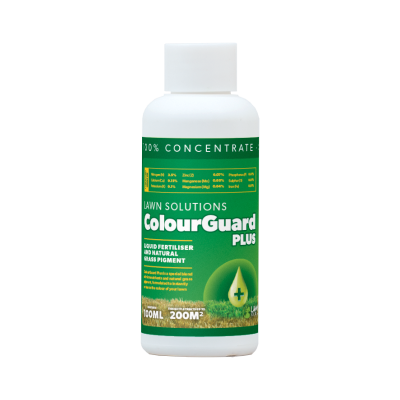Have you noticed some new weeds starting to pop up in your lawn this autumn, but are not sure on what they are and how to remove them? In this blog post, we look at a few different lawn weed types that can appear in autumn, and look at the best way to remove them.
Skip to: How to Remove Winter Grass, How to Remove Paspalum, How to Remove Creeping Oxalis
How Do I Remove Winter Grass from My Lawn?
Winter Grass Key Features:
- Grows in tufts
- Low growing
- Soft, drooping green leaves
- Has triangular shaped seed heads
In cooler regions like Victoria, Winter Grass can start to emerge as early as March. Warmer regions like northern NSW or QLD won’t usually experience Winter Grass till the temperatures drop a bit further in late Autumn and Winter.

As the popular saying “one year of seeds will bring seven years of seeds” suggests, stopping Winter Grass before it has a chance to go to seed is key. If only a small amount of Winter Grass is growing, the best and quickest way to remove it is by hand. This can be a relatively easy task as it doesn’t have a particularly strong root system.
If more Winter Grass is growing than can be removed by hand, we recommend using a Winter Grass specific herbicide like Amgrow Winter Grass Killer.

If the Winter Grass growing in your lawn has already had a chance to seed, or if you had Winter Grass growing last season, we recommend using a pre-emergent herbicide to help prevent its spread. For pre-emergents, we recommend using our Oxafert 3kg and Oxafert Plus 20kg.

How Can I Remove Paspalum from My Lawn?
Paspalum Key Features:
- Starts growth in clumps, then spreads throughout sparse and poor-performing lawns
- The leaf is usually long, broader and rougher than most other grass types
- Seed heads will grow along long stems, usually with 2-11 seed heads per stem
- Seeds are sticky
Paspalum is another annual grass weed that you may notice growing in your lawn. This weed will mostly grow in the warmer months of Spring and Summer, but as we have had a warm start to Autumn, you may still see some Paspalum present.

Like Winter Grass, if only small amounts are growing, the best and easiest way to get on top of the Paspalum is to remove it by hand. If the weed is more mature, removal will be more labour-intensive and will require you to dig underneath the crown, below the soil level, so that you can remove the entire plant.
If the Paspalum has become more widespread, we recommend using an herbicide with DSMA as the active ingredient. Something like the David Grays Crabgrass and Clover Killer is ideal. However, it is important to note that these herbicides are not safe to use on kikuyu, buffalo and blue couch lawns.
If you are unable to use this herbicide on your lawn type, you can remove it by selectively applying a non-selective herbicide like Roundup or Zero. When using roundup, it is important only to apply it to the Paspalum and not your lawn as it will also harm it. We recommend using a weed wand or the Yates Zero Gel to help with an accurate application.
How Can I Remove Creeping Oxalis from My Lawn?
Creeping Oxalis Key Features:
- Light green to purple-coloured, heart-shaped leaves
- Produces small yellow flowers
- When seeds dry out, they can explode, causing the seeds to disperse across your lawn
Creeping Oxalis is another weed type that you may notice growing in your lawn in April. This weed will quickly run along the surface of the soil and produces roots from the leaf as it grows and creeps under and through your lawn. If you notice Creeping Oxalis growing in your lawn, treating it as soon as possible before it has a chance to go to seed is best.

Luckily, Creeping Oxalis can be treated with common broadleaf herbicides like All Purpose Weed Control (hose-on) and Estate Herbicide (concentrate), which are both safe on most common lawn types.


If the Creeping Oxalis has already gone to seed, we also recommend looking into using a pre-emergent herbicide like our Oxafert and Oxafert Plus. These products will help stop the seeds that have been dropped into the soil from germinating and growing, preventing further weed invasions.

For more lawn care tips and advice, make sure you check out our other lawn care blogs here.


